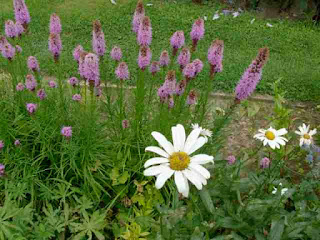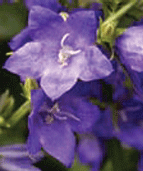Many of the early blooming plants from spring don’t like the hot dry conditions of July and will begin to die back. They will sacrifice leaves, flowers and stems during drought to send all their water and energy to the roots. It’s a survival instinct so the plant will grow again. Simply cut back the dry leaves and wait for rain to come. Often the plants will send up a few new ones later in the summer when the rains return. Typically, many a flowering plant can sense when it's in a drought and so it will bloom earlier than normal. The flowers are often short lived and last a week or two, then it begins to set seed. The hot temperatures trigger this need to finish blooming so it will propagate.
The bright colours of coreopsis daisy and Shasta daisy are typical for July. Yellow day lily, purple Liatris, and some varieties of hosta all begin to bloom in early summer. Astilbe and purple coneflower are all beginning to come into their own as the days heat up.
In
















